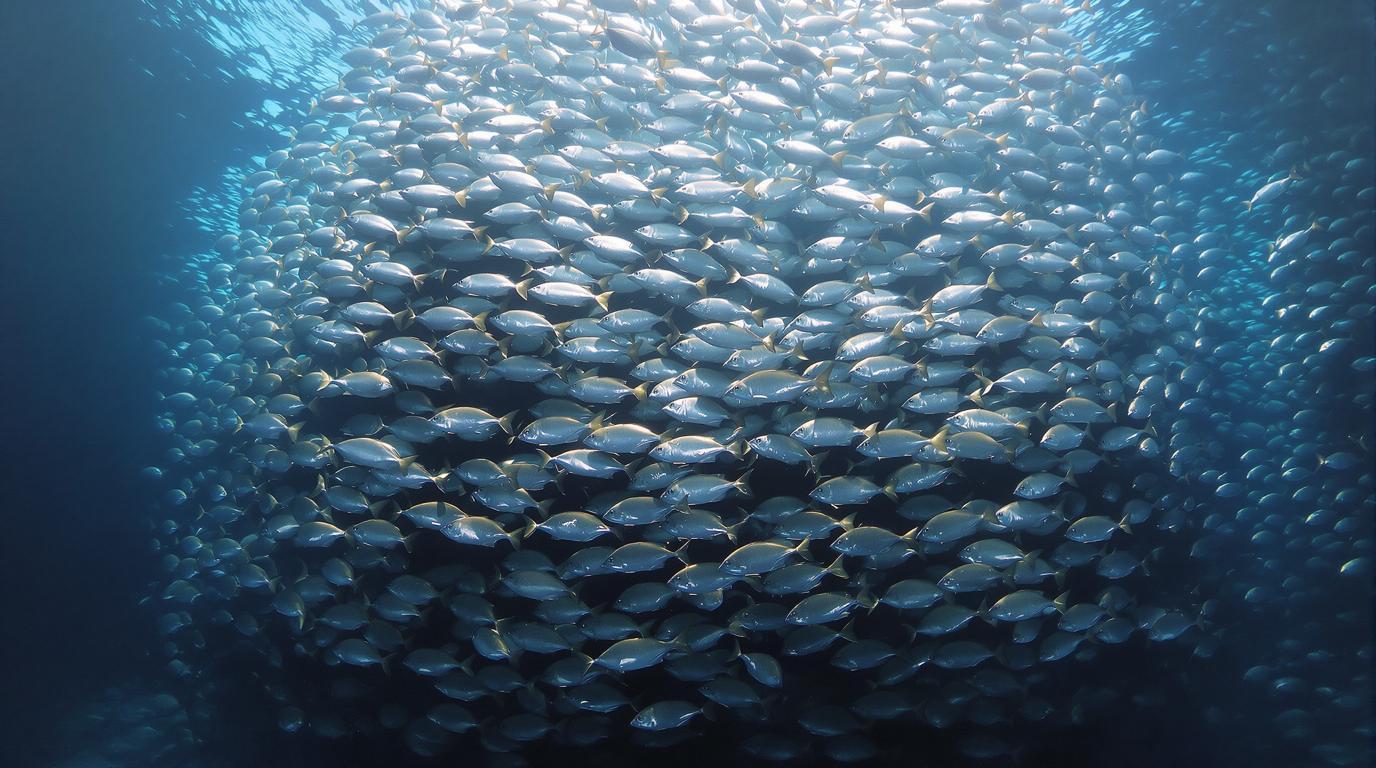Deep in the Tuamotu Archipelago, where ancient coral formations create underwater cathedrals, lies the only French Polynesian atoll where nature’s most spectacular marine event unfolds in absolute secrecy. Fakarava guards secrets that would make Bora Bora jealous—and its 837 residents work tirelessly to keep it that way.
This isn’t another overcrowded tropical paradise. This is Passe Garuae, the largest navigable pass in all of French Polynesia, where millions of grouper gather annually for spawning events so rare that marine biologists travel across oceans just to witness them. The lagoon spans 1,112 km²—nearly 19 times larger than Manhattan—yet remains virtually unknown to mass tourism.
What makes Fakarava truly unique isn’t just its size or beauty. It’s the only atoll in French Polynesia where UNESCO designation meets community-controlled tourism, creating an experience that simply doesn’t exist anywhere else in the Pacific.
The marine phenomenon that exists nowhere else
Passe Garuae’s unmatched underwater theater
At 1.6 kilometers wide, Passe Garuae dwarfs every other navigable pass in French Polynesia. During incoming tides, this massive channel becomes nature’s amphitheater, funneling nutrient-rich waters that support marine life densities found nowhere else in the region. The grouper spawning events occur here with clockwork precision, creating underwater snowstorms of eggs that transform the entire ecosystem.
The Shark’s Hole phenomenon
Near Tumakohua Pass, Shark’s Hole hosts over 700 gray reef sharks during peak months. This concentration exists only here, where the atoll’s unique geography creates perfect hunting conditions. Marine biologists have documented species interactions at Shark’s Hole that occur nowhere else in French Polynesia, making every dive a potential scientific discovery.
Why UNESCO protection makes Fakarava irreplaceable
The 2006 designation that changed everything
Fakarava’s UNESCO Biosphere Reserve status, granted in 2006, represents the only such designation in French Polynesia’s outer atolls. This protection encompasses four neighboring atolls, creating a marine sanctuary spanning thousands of square kilometers. The designation wasn’t just ceremonial—it established scientific protocols that maintain water quality and species diversity at levels impossible in commercial tourism zones.
Community-controlled visitor management
Unlike Bora Bora’s resort-dominated landscape, Fakarava’s tourism committee actively limits visitor numbers to protect both marine ecosystems and cultural authenticity. Permits are required for certain diving areas, and group sizes remain intentionally small. This community-first approach ensures that every visitor experiences the atoll as intended—intimately and respectfully.
The authentic culture mass tourism never touches
Living traditions in a modern world
Fakarava’s 837 residents maintain pearl farming and subsistence fishing practices that have sustained their community for generations. At Havaiki Lodge, visitors can witness traditional pearl cultivation techniques while staying in accommodations that blend seamlessly with the natural environment. These aren’t tourist performances—they’re daily life continuing as it has for centuries.
The traditional names that tell the real story
Locals still call their home Havaiki-te-araro and Farea, Polynesian names that reflect deep cultural connections to the land and sea. These traditional names appear on no tourist maps, shared only with visitors who earn local trust through respectful engagement. Understanding these names opens doors to cultural experiences that commercial tourism simply cannot provide.
The practical magic of choosing Fakarava
Accessibility that preserves authenticity
Reaching Fakarava requires flights from Tahiti followed by boat transfers—a journey that naturally filters out casual tourists while welcoming serious travelers. This accessibility barrier isn’t inconvenience; it’s protection. Every extra step preserves the intimate atmosphere that makes Fakarava special.
The perfect timing for marine encounters
July offers optimal diving conditions during French Polynesia’s dry season, when visibility reaches its peak and shark activity intensifies. The current timing aligns perfectly with post-spawning season, when marine life remains active and abundant. Weather patterns remain stable, creating ideal conditions for both diving and cultural exploration.
Fakarava represents something increasingly rare in our connected world: a place where nature’s rhythms still dictate human activity, where community values override commercial interests, and where authentic experiences await those willing to journey beyond the obvious choices.
For travelers seeking genuine discovery rather than manufactured paradise, Fakarava offers the Pacific’s most exclusive secret—one that 837 guardians hope you’ll experience with the respect and wonder it deserves.
Essential planning for Fakarava
How do I reach Fakarava from major cities?
Fly to Tahiti from your home city, then take Air Tahiti’s regional flights to Fakarava (1.5 hours). The airport requires boat transfers to accommodations, adding to the authentic island experience.
What makes the diving truly unique?
Fakarava’s UNESCO protection maintains water quality and species diversity impossible in commercial zones. The 700+ sharks at Shark’s Hole and grouper spawning events create encounters found nowhere else in French Polynesia.
When is the best time to visit?
July through October offers optimal conditions during the dry season. July timing provides perfect visibility and active marine life following the spawning season.
How does community-controlled tourism work?
Local committees limit visitor numbers and require permits for certain areas. This ensures authentic experiences while protecting both marine ecosystems and cultural traditions.
What accommodation options exist?
Options range from Havaiki Lodge with integrated pearl farming to smaller eco-lodges. All accommodations emphasize sustainability and cultural connection over luxury amenities.
